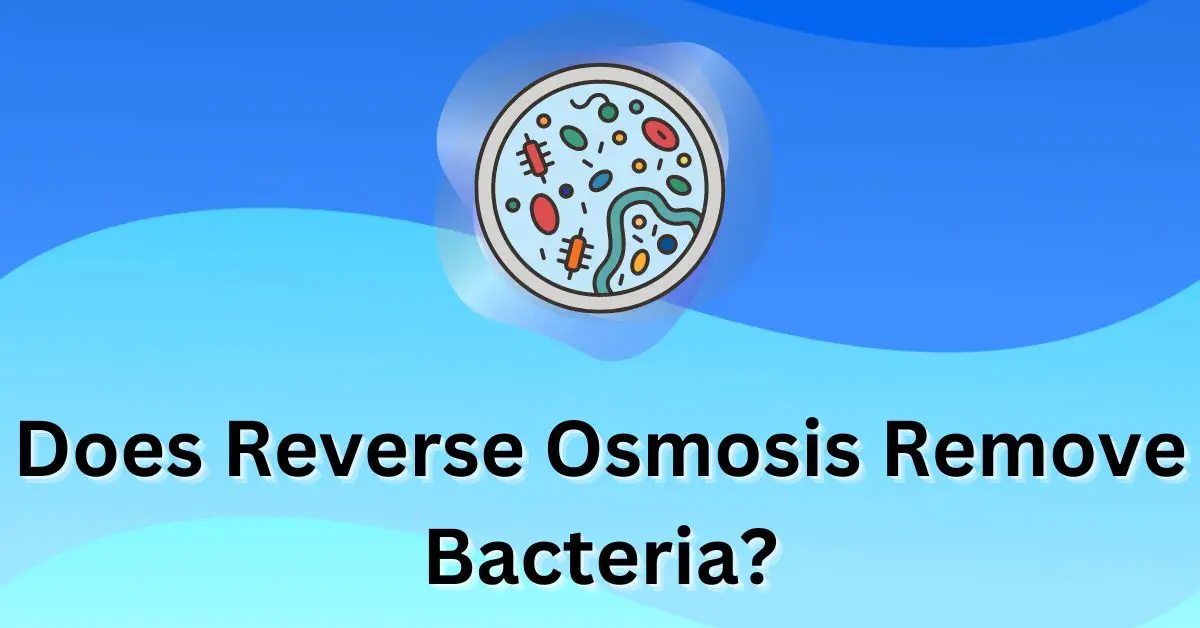Water filtration systems have become increasingly popular in recent years as more people become aware of the importance of drinking clean, safe water. Among the different types of water filtration systems, reverse osmosis (RO) systems are one of the most popular.
While RO systems are known to be effective at removing common tap water contaminants like chlorine, lead, and arsenic, many people wonder if they can also remove bacteria.
This blog post will discuss the effectiveness of reverse osmosis water filters at removing bacteria, so that readers can make an informed decision when selecting a water filtration system. We will examine the different types of bacteria, the role of reverse osmosis filtration in removing bacteria, and the other steps that can be taken to ensure the safety of drinking water.
What is Bacteria?
Bacteria are single-celled microorganisms that are found everywhere on Earth. They are among the oldest and most abundant forms of life on the planet, and they play a vital role in many ecological processes. There are many different types of bacteria, and they are classified based on their shape, size, and other characteristics.
Some bacteria are harmless and even beneficial to humans, while others can cause illness and disease. Bacteria can be found in the soil, water, and air, as well as on the surface of plants and animals, including humans. They are important decomposers in ecosystems, breaking down organic matter and releasing nutrients back into the environment.
Some bacteria also have important roles in the food industry, such as in the production of fermented foods like yogurt and cheese.
Types of bacteria found in water
There are many different types of bacteria that can be found in water, and the types present can vary depending on the source and quality of the water. Some common types of bacteria that may be found in water include:
- Coliform bacteria: These bacteria are commonly found in the environment, including in soil, water, and on plants. Coliform bacteria are generally not harmful, but their presence in water can indicate the potential presence of other, more harmful bacteria.
- Escherichia coli (E. coli): This type of bacteria is found in the feces of humans and animals, and it can be present in water if it has been contaminated with sewage or animal waste. E. coli can cause illness if ingested, and it is often used as an indicator of water quality.
- Legionella pneumophila: This type of bacteria can cause a serious respiratory illness called Legionnaire’s disease. It is found in natural bodies of water, such as rivers and lakes, as well as in man-made water systems like hot tubs and cooling towers.
- Pseudomonas: This is a type of bacteria that is commonly found in soil, water, and on plants. Some strains of Pseudomonas can cause illness in humans, particularly in people with compromised immune systems.
- Salmonella: This type of bacteria is found in the feces of animals and humans, and it can be transmitted to humans through contaminated food or water. Salmonella can cause a gastrointestinal illness called salmonellosis.
It’s important to note that not all bacteria found in water are harmful, and some types can even be beneficial. However, it’s always a good idea to use caution when consuming or coming into contact with water, especially if you are not sure of its quality.
Does reverse osmosis remove bacteria?
Reverse osmosis is a process that is most commonly used in water filtration systems. It is highly effective in removing a wide range of contaminants from water, including heavy metals, fluoride, chlorine, and other dissolved substances.
But does reverse osmosis filter remove bacteria? The answer is yes.
Reverse osmosis can remove bacteria that are suspended in water, although the process may take a little longer. The process works by forcing water molecules through a semi-permeable membrane, allowing only clean water molecules to pass through.
Bacteria, which are much larger than water molecules, cannot pass through. Therefore, the process removes them from the water. To ensure maximum removal of bacteria, it is recommended that a carbon filter be used in conjunction with reverse osmosis filtration.
Carbon filters can also remove other types of contaminants from water, such as chlorine, chloramines, and sediment. By combining the two processes, you can be sure that the water you
Conclusion
Overall, reverse osmosis water filter systems are effective at removing bacteria and other contaminants from water, making them an excellent choice for people concerned about their family’s health and water quality.
However, it is important to remember that reverse osmosis systems should be used in conjunction with other water purification methods to ensure the highest level of safety. Additionally, the filters should be replaced regularly in order to maintain their effectiveness.
